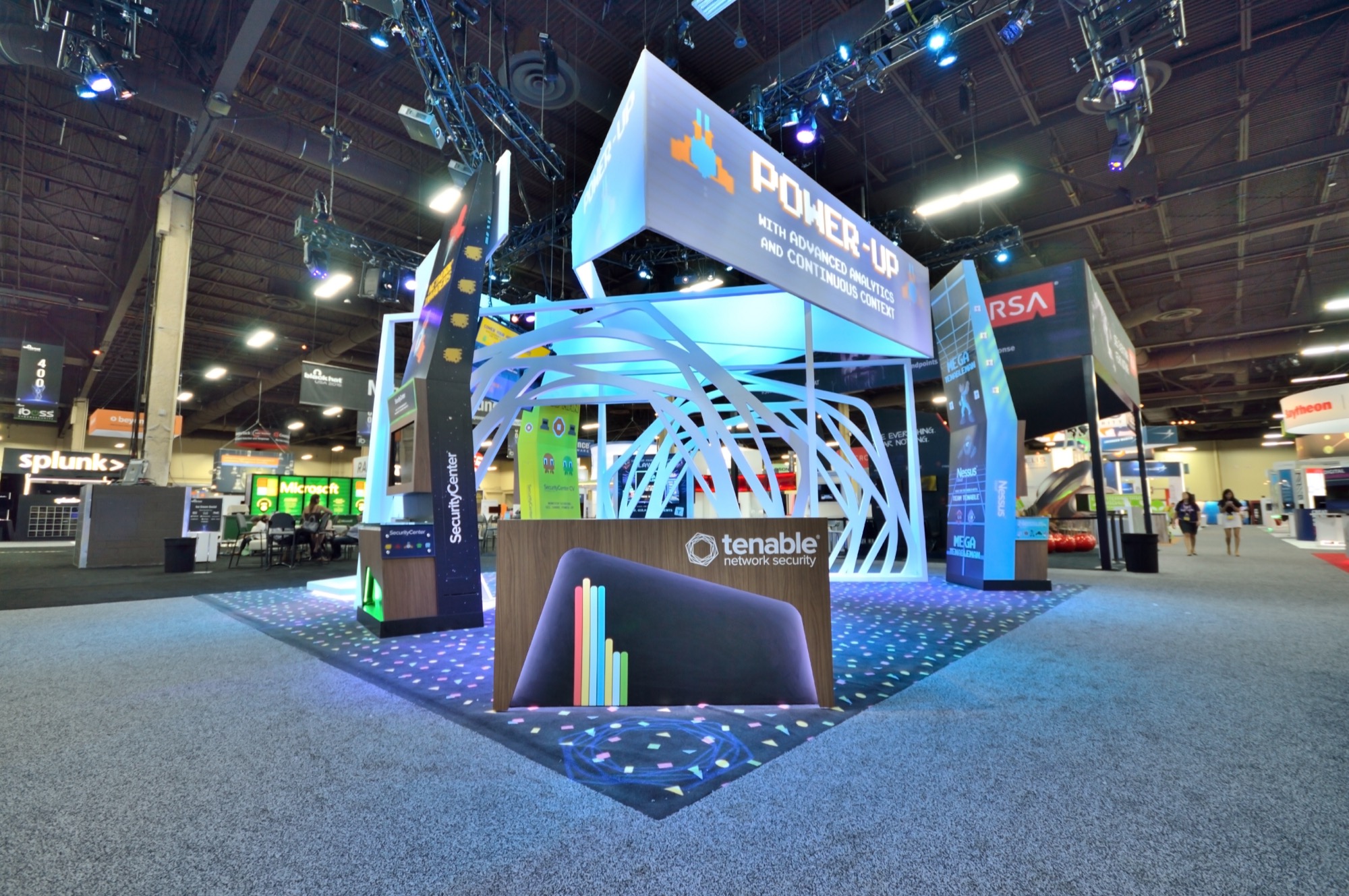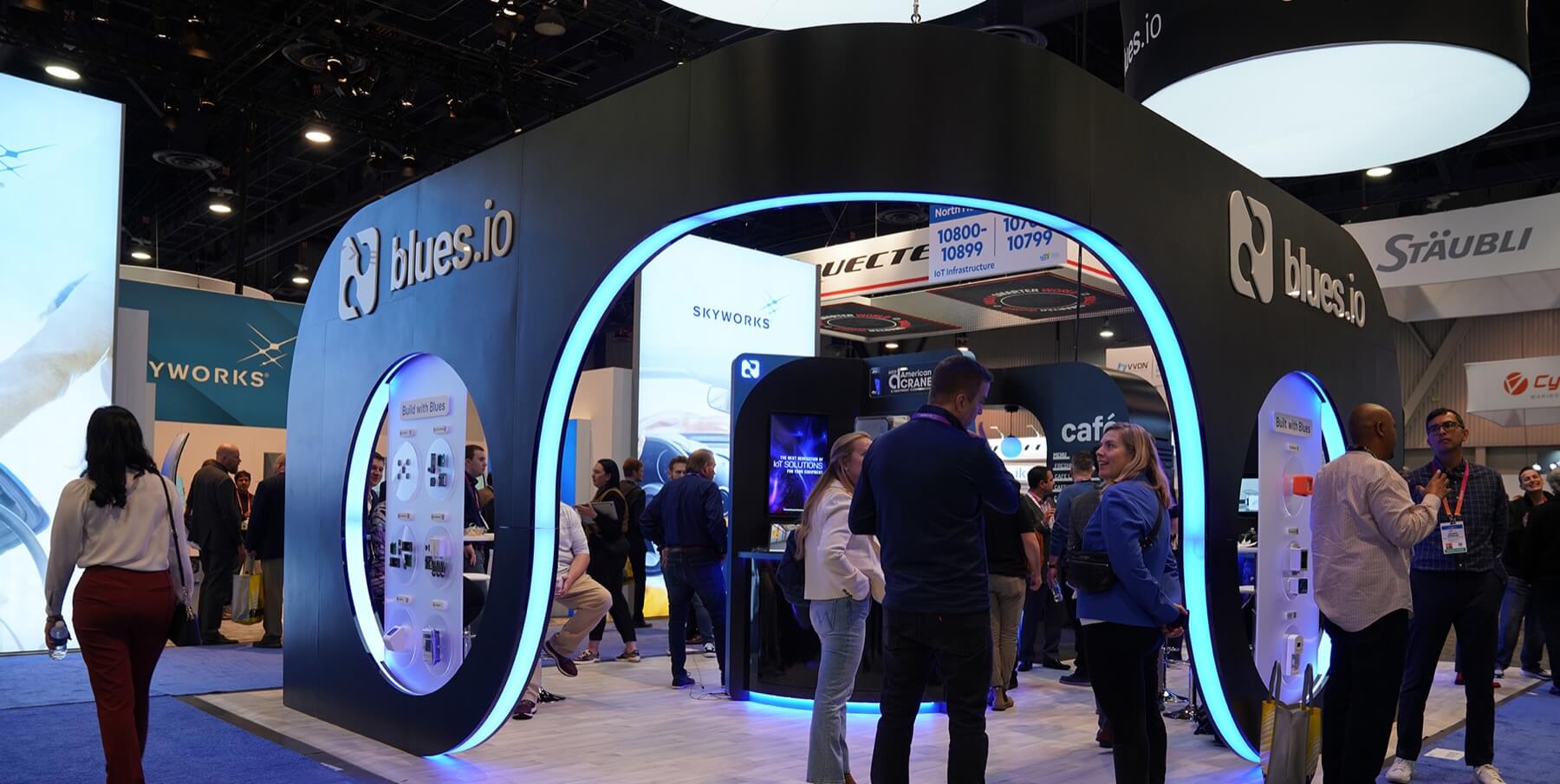Packing everything that you want to say about your brand into a trade show booth space, no matter how large or how small, is a profound challenge. For many brands, there are various formats to consider to do something different, stand out from other vendors, and cut through the noise that fills busy B2B trade shows. How do you capture the attention of prospects, pull them in, and leave them inspired to reach out to you as soon as they’re back in the office when there are dozens of other brands competing for the same audience?
It’s a tall order, but that’s the job of your trade show exhibit design. Event marketing exhibits communicate your brand, capture the interest of your target buyers, and create a space where your most important interactions with leads can happen.
As brands return to heavily investing in their in-person trade show floor experience, significant shifts are happening in the world of trade show booth design. Here’s a look at some of the top trends that are driving what you’ll be seeing in event marketing in the months ahead.
Brand storytelling and narrative takes center stage.
Brands are seeking ways to tell their unique stories as part of their event marketing presence, from how they solve critical industry problems to their environmental and social values.
Conveying a brand narrative effectively requires an end-to-end experience that takes all aspects of the value proposition and customer experience into consideration. Often this translates into thematic design, where brands are offering product discovery stations, experiences designed to deepen brand and buyer connections, foster strong relationships, and interactive brand history or innovation exhibits.
While the power of brand narrative on the show floor has been happening for some time, it’s reaching a fever pitch and trickling down to smaller and midsize brands. At the latest Consumer Electronics Show in Las Vegas, key trends were emerging that underscored this. Many brands had exhibit concepts centered around showing how they are changing the world and others had their entire product portfolio on display.
While these are two different approaches, they highlight the importance of event marketing strategies that incorporate both a human perspective and a differentiated voice in today’s market. Category leaders can build their messaging on the familiar, central pillars of an industry, but there’s a need for greater differentiation and building a strong narrative to help smaller brands stand out.
Brands own the visual space they’re given.
For maximum visual impact, brands are considering creative ways to own the entire visual space that their booth occupies. This could mean adding interactive elements on the floor or rethinking the way that brands use the space above their exhibits. While exhibits have a footprint, it’s important to realize that above and around those booths there’s often space available to work with. Negative space itself (i.e., the background or the area that surrounds the focal point) can be used effectively, and often creating engaging content for these spaces is a meaningful design opportunity.
In an environment with a greater pressure to drive ROI, every space that’s left blank unintentionally is leaving dollars on the table. As brands get creative about how they own the visual space they’ve been allocated at a show, the conversation is becoming more sophisticated. From a design perspective, there’s an imperative to think in three dimensions and make sure that exhibit concepts utilize the space from top to bottom in a strategic way. Brands are also innovating on how they use time and motion to add another layer of engagement with show visitors.
Sustainability at the forefront.
Research from McKinsey and NeisenIQ found that 78% of US consumers say that sustainable lifestyles are important and influence their spending. To address this reality, brands — whether targeting B2B buyers or going B2C — are bringing sustainability to the forefront of their event marketing efforts.
The IAEE has determined that the events industry, including trade shows, has a significant environmental impact through carbon footprint, waste, and exhibit construction. As a result, interest in sustainable exhibit construction and modifications is on the rise. For many brands, sustainability is part of their brand’s larger mission and showcasing that in event marketing is part of a cohesive brand experience.
Within exhibit design, we’re seeing the use of recycled and upcycled materials, sustainable sourcing, outlining environmental policies, offsetting carbon footprints for show participation, and choosing energy-efficient lighting and sound options.
Broadly, it’s also important to think about how show logistics and other choices match those values. For example, STAR recently opened a Las Vegas location to lower the environmental impact of staging shows in this popular location. Reducing the distance exhibits and other creative is shipped is one tangible example of the way brands are pivoting to ensure both exhibit designs and event marketing practices become more sustainable. While progress is being made in this area, sustainable show practices as part of a larger sustainability strategy are often in the early stages for brands.
AI and technology are driving creative and personalized experiences.
Deeper technology integrations are delivering greater personalization to audiences within event marketing. Digital signage makes it easy to shift creative or demos on display, depending on the audience visiting the exhibit. Touch screens, virtual reality headsets, and augmented reality experiences give prospective buyers the ability to focus on what’s most relevant to their interests. Event marketing professionals are constantly emerging and being integrated to offer more personalized experiences. Technology makes it easier to change creative with less cost and logistical heavy lifting, enhancing the experience for every attendee.
The explosion of AI is also impacting event marketing and trade shows, with generative AI moving to the forefront. Within exhibits, brands are incorporating AI-powered chatbots to answer guest questions and gather lead information when staff is tied up talking to other prospects, for example. Behind the scenes, AI is helping to streamline the creative process, gather sentiment data on how participants respond to an exhibit and more. With layers of personalization built into the trade show booth design, it’s easier to reach prospective buyers and convert them with an experience that’s tailored to their needs. Technology helps make that vision a reality for brands with limited budgets and tight timelines.
Next steps.
Trade show booth design is the cornerstone of communicating your brand at live events. Whether you’re a solid heritage brand or an edgy modern innovator, your event marketing should tell that story. In 2025, there’s less of a focus on elaborate design and more on event marketing design trends that put a brand’s visuals, story, products, and customer experience in the spotlight to help them cut through the noise. Embrace these trends to modernize your trade show presence and create unforgettable experiences that convert prospects into customers.
Learn more about Trade Show Design Solutions from STAR.
Read more about how companies are bringing their brands to life across in-person experiences, from trade shows and events to retail spaces and corporate offices.






